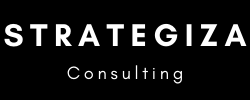Amazon eCommerce
Copyright & IP Issues on Amazon: What Sellers Must Know
Copyright & IP Issues on Amazon: What Sellers Must Know

Amazon, the world’s largest online marketplace, is a platform that allows sellers to reach millions of customers worldwide. However, with this vast opportunity comes a responsibility to understand and adhere to the rules and regulations surrounding copyright and intellectual property (IP) rights. This article will delve into the complexities of copyright and IP issues on Amazon, providing sellers with the knowledge they need to navigate this complex landscape.
Understanding Copyright and IP Rights
Before we delve into the specifics of Amazon’s policies, it’s crucial to understand what copyright and IP rights entail. Copyright is a legal right that grants the creator of an original work exclusive rights to its use and distribution. IP rights, on the other hand, refer to the legal rights that result from intellectual activity in the industrial, scientific, literary, and artistic fields.
- Copyright: This protects original works of authorship, including literary, dramatic, musical, and artistic works.
- Patents: These protect inventions or discoveries that are new and useful.
- Trademarks: These protect words, phrases, symbols, or designs that distinguish the source of goods.
Amazon’s Stance on Copyright and IP Infringement
Amazon takes copyright and IP infringement very seriously. The company has a zero-tolerance policy towards the sale of counterfeit items and unauthorized reproductions. Amazon’s policy states that sellers must ensure they have the necessary rights to sell their products on the platform. Failure to comply can result in penalties, including account suspension or termination.
Common Copyright and IP Issues on Amazon
There are several common issues that Amazon sellers encounter regarding copyright and IP rights. These include:
- Counterfeit Products: Selling fake or unauthorized replicas of a product is a clear violation of copyright and IP rights.
- Unauthorized Use of Brand Name: Using a brand name without permission to sell similar or counterfeit products is a common issue.
- Product Listing Hijacking: This occurs when another seller takes over your product listing to sell counterfeit items.
- False Infringement Claims: Some sellers may falsely claim that another seller is infringing on their copyright or IP rights to get their competition suspended.
How to Protect Your Copyright and IP on Amazon
Protecting your copyright and IP rights on Amazon is crucial to maintaining your business’s integrity and profitability. Here are some steps you can take:
- Register Your Copyright and IP: Registering your copyright and IP with the appropriate government agency provides legal proof of your ownership.
- Enroll in Amazon Brand Registry: This program provides brand owners with increased control over their product listings on Amazon.
- Monitor Your Listings: Regularly check your product listings to ensure no one is selling counterfeit versions of your products or hijacking your listings.
- Take Action Against Infringers: If you discover someone infringing on your rights, report them to Amazon and consider legal action.
Case Study: The OtterBox Incident
In 2013, OtterBox, a popular phone case manufacturer, sued a third-party Amazon seller for selling counterfeit OtterBox products. The seller was found guilty and ordered to pay $2 million in damages. This case serves as a stark reminder of the potential consequences of copyright and IP infringement on Amazon.
Conclusion
Understanding and respecting copyright and IP rights is crucial for any Amazon seller. Not only can infringement lead to severe penalties, but it can also damage your brand’s reputation and customer trust. By taking proactive steps to protect your rights and monitor your listings, you can ensure your business’s longevity and success on Amazon.
Remember, when it comes to copyright and IP rights on Amazon, it’s always better to be safe than sorry. If you’re unsure about anything, seek legal advice to ensure you’re not inadvertently infringing on someone else’s rights.

